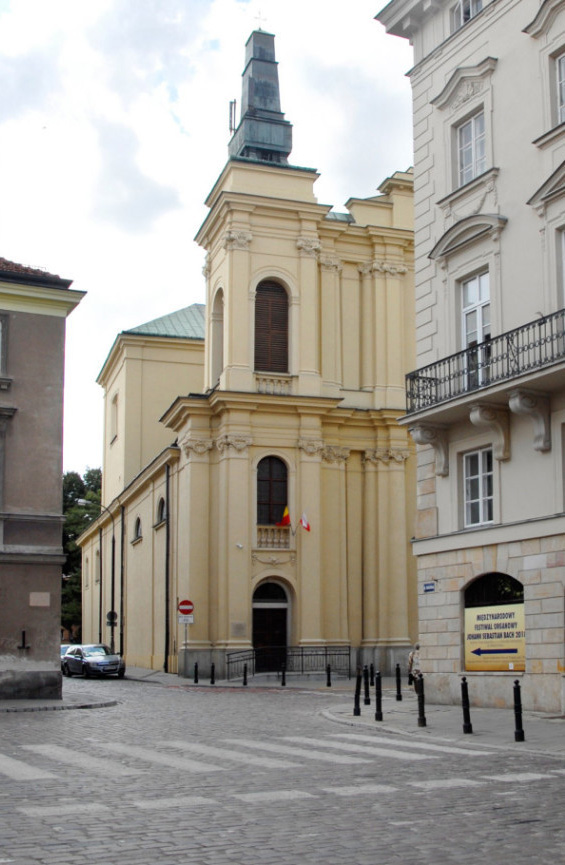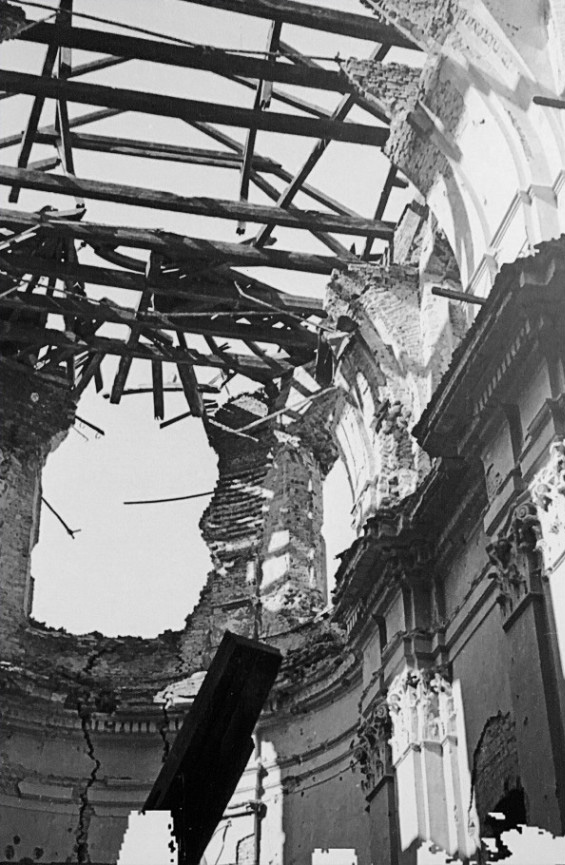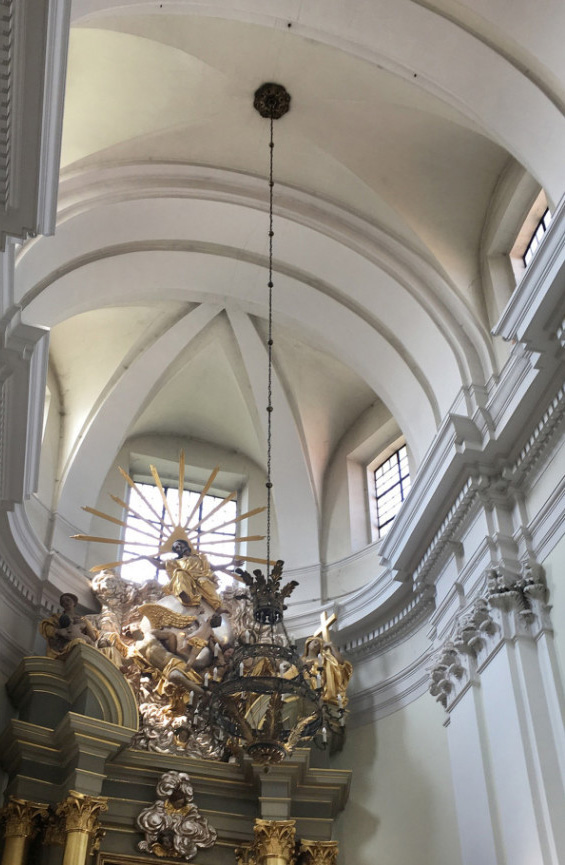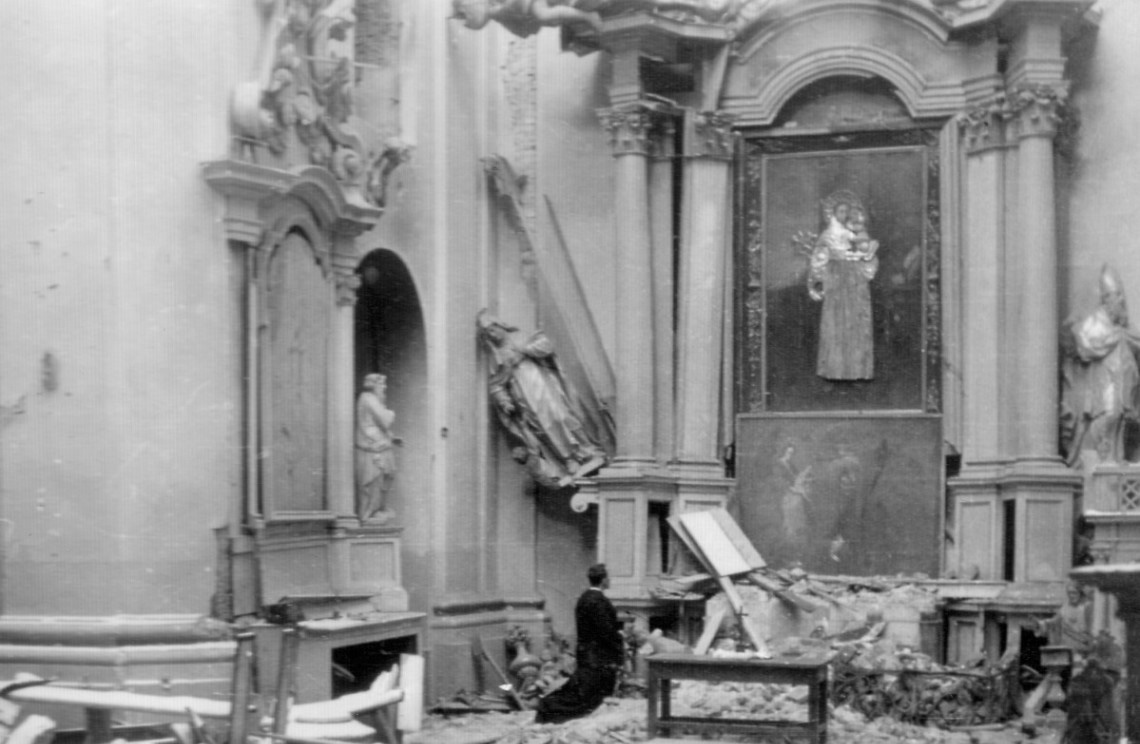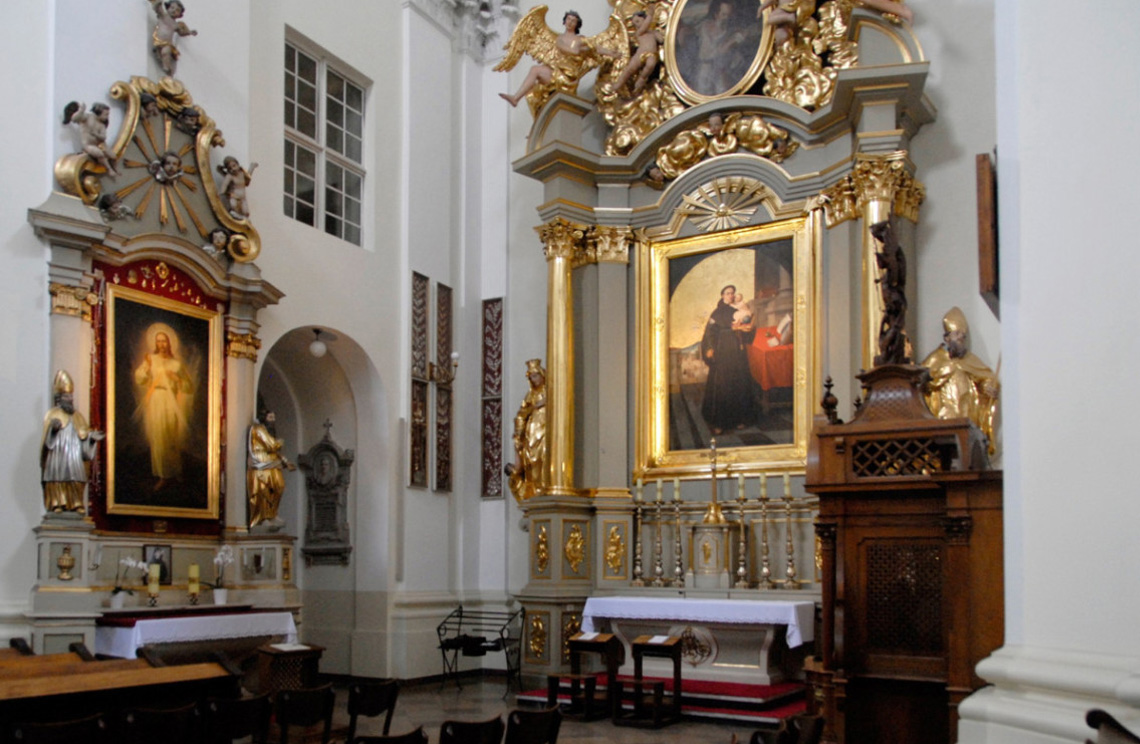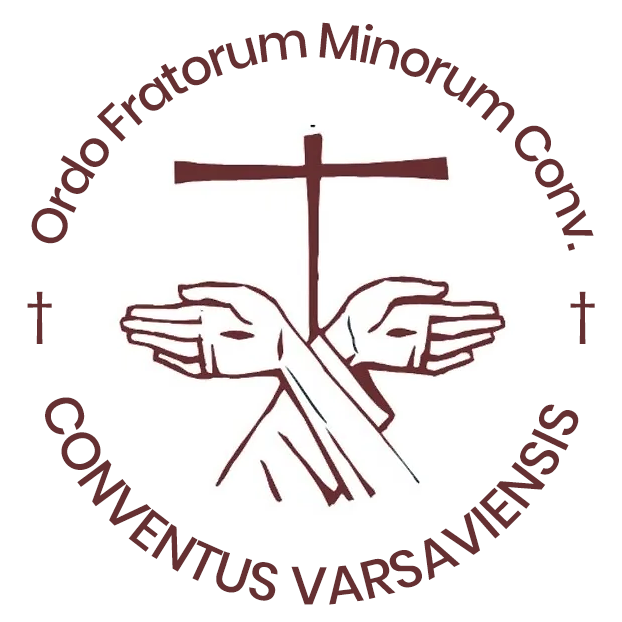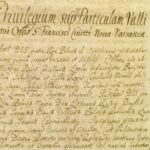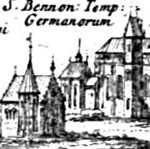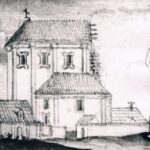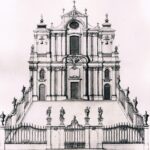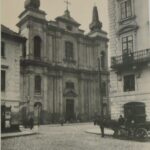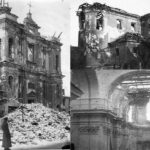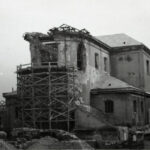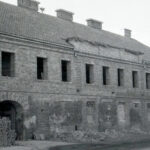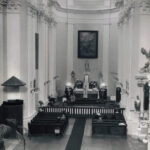
Second temple
Foundation stone
Laying the foundation stone for the construction of a new church. The beginning of collecting the necessary materials and inviting an Italian architect Giovanni Battista Ceroni to work out the plans of the building. Its construction started a decade later, lasted several decades and was repeatedly interrupted due to lack of funds, epidemics haunting the city and ongoing wars.
Construction stages:
Construction of the chancel
Overseen by Giovanni Ceroni the construction of the chancel and the adjacent two chapels: the one of Our Lady and the other of St. Antony (present sacristy). The generous donors were Adam Kotowski, the lord of Wyszogród and the king Jan III Sobieski (the then Superior of the monastery, Father Rafał Grabia, was his court theologian and confessor).
Laying the foundations
Construction of the transept
Completion of the church corps
Post-construction works:
Decree of the Prussian king
A decree of the Prussian king referring to the suppression of the monastery and to the exile of the monks to the monastery in Warka. Napoleonic wars and the weakening of the Prussian influence in the capital made the Franciscans manage to stay – they lost only a part of the monastery from the side of Franciszkańska Street 2 (the so-called novitiate), which was rebuilt to prison.
Academy of the Clergy
In the part of the monastery called novitiate (from the side of Franciszkańska Street 2) was founded – by the efforts of Father Provincial Jakub Piasecki and with the permission of the Tsar of Russia – the Academy of the Clergy, the only one in the Congress Kingdom, which educated candidates for the priesthood (in 1865 the Academy moved to the larger post-Carmelite convent at Krakowskie Przedmiescie).
Suppression of the whole monastery
Suppression of the whole monastery in retaliation for active support of the January Uprising. The monks are exiled for life to the Franciscan monastery in Kalisz. The church was taken over by the diocese and then changed into a garrison church for the Catholics serving in the Tsarist army in the nearby Citadel. The monastery was taken over by the invaders, sold and adapted to various secular purposes.
The return of the Franciscans to Warsaw
At the invitation of Aleksander Kakowski, the Bishop of Warsaw, the Franciscans return to the capital after 55 years of absence. They only got back to the west wing of the monastery. The interwar period is an intensive time of restoration and new equipment installation of the temple (assumption of electrical and heating systems, zinc sheet covering of the roof, building of new church organ and confessionals, renovation of altars, painting of the whole interior…) as well as a significant revival of pastoral work and cultural activities.
Warsaw Uprising
During the Warsaw Uprising the church and the monastery became a shelter for hundreds of refugees. The monks actively engage in spiritual and material help for insurrectionists and civilians. They run a field kitchen and an aid station. They serve as clergymen and paramedics in many places in the Old Town. As a result of the warfare, the church and the monastery are increasingly destroyed by enemy missiles.
Bombing of the church
Takeover of the monastery by the Nazi
Rebuilding
The intensive rebuilding and retrofitting of the temple: installation of the new roof ceilings (1945-46), new chancel floors (1945, 1948), repair of both towers (1948), renovation of side altars (1945-63), renovation of church organ (1949, 1953), installation of bells (1961), renovation of the pulpit (1964-66), restoration of the main altar (1973-83), renovation of the elevation (1954, 2003, 2016), damp insulation (2004 – 2015), insulation of the roof ceilings (2010-2015) (2012-14), heating and lighting modification (2015-16), widening of the square in front of the church (2017). Almost at the same time, takes place the reconstruction of the monastery, namely: the adaptation of the partly saved western wing (1945-46) to habitable conditions as well as the erection of the other two wings (1950-54).
Renovation and restoration works of the entire post-war period continue all the time. Thanks to them, the temple regains its original glow.

